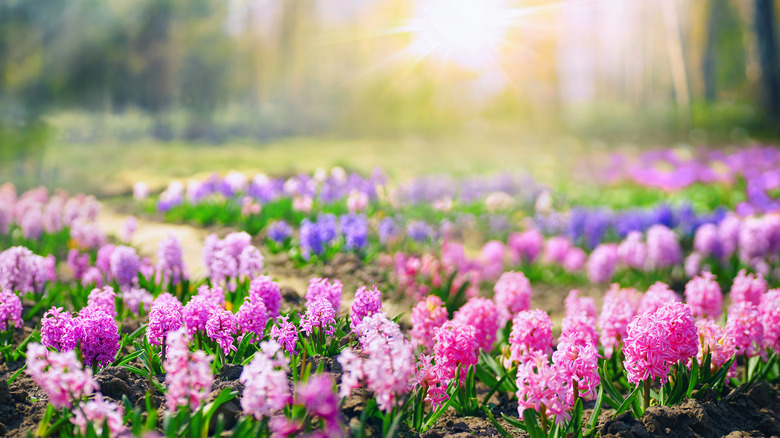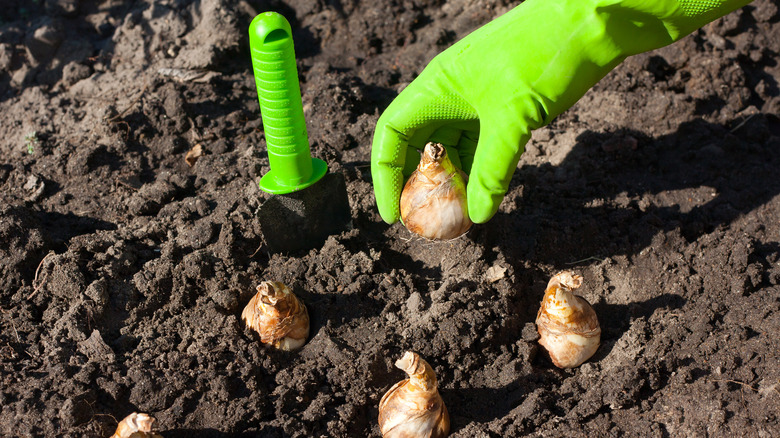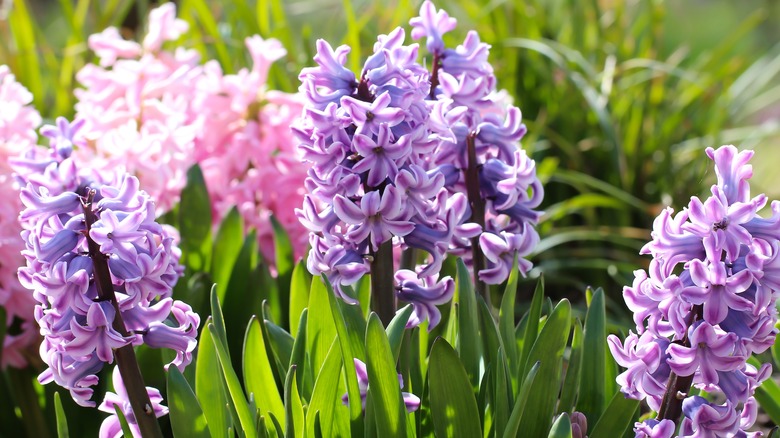What Happens If You Plant Hyacinth Bulbs In The Spring?
Fall is one of the busiest times of year. Back to school, prepping the house for winter, and upcoming holidays can easily absorb much of your time. It's also the optimal moment to plant spring-flowering bulbs. If you can't squeeze this gardening task into your overloaded schedule, though, you still have a shot at enjoying spring blooms. Hyacinth bulbs are practical and beautiful additions to your spring flower beds since the blossoms regale you with a burst of color and scent. Plus, the blossoms last up to two weeks, outlasting other spring flowers.
Hyacinths, like most bulbs, depend on a cold season in order to flower. Ideally, these perennials hibernate in your flower beds from mid-fall until the spring. However, with the right planning and care, you can trick nature into a better fit for your calendar. Follow some simple guidelines to get hyacinth bulbs in the ground in the spring, and you may have enough time to witness fragrant blooms as little as a month later.
Essentials for spring hyacinth planting
While it's best to plant flower bulbs in the late summer or early fall, it's possible to enjoy hyacinths with a spring planting. These showy plants grow well from USDA zones 4 to 8. Consult your local university extension for information on last frost dates, growing zones, and other details particular to your area.
As long as you get the bulbs in the ground at least one month before the last frost of the season, you have a good chance of healthy blooms. Still, hyacinth bulbs perform best with at least 10 weeks of cold, so if your ground is soft enough to plant bulbs up to three months before the growing season starts, you'll up your possibilities of prolific blossoms. If you live in an area that doesn't experience freezing temperatures, you can help your spring bulbs bloom with this gardening hack. This tip can also be useful if you live in areas where the ground is too frozen to plant bulbs in early spring.
Set your hyacinths up for success
Lay the foundation for optimal blooms with the best ways to care for hyacinths, since spring-planted bulbs often don't have the time to build up root systems as strong as fall-planted bulbs do. Start with large bulbs that are packed with nutrients. When considering where you'll plant your flowers, hyacinthus orientalis flourish in areas where they will get six to eight hours of sun per day. Yet, they also tolerate partial shade. Hyacinths are relatively drought-tolerant, but keeping the soil moist and amended with organic material is essential just after planting to help the bulb establish strong roots.
While planting, be sure to space large bulbs 4 to 6 inches apart at a depth of 4 to 6 inches. If your bulbs are on the smaller side, they can perform well planted with both 2 to 3 inches depth and spacing from other bulbs. Be sure to plant bulbs with the tips facing up and root ends facing down. Hyacinth bulbs can potentially bring you cheer every spring if you give them a hand. Protect the young spring bulbs by applying mulch gently, without a rake. After the blooms wilt, trim them to prevent the plant from expending extra energy creating seed. However, do not trim the leaves, since they are essential to help the bulb store nutrients for the upcoming season.


